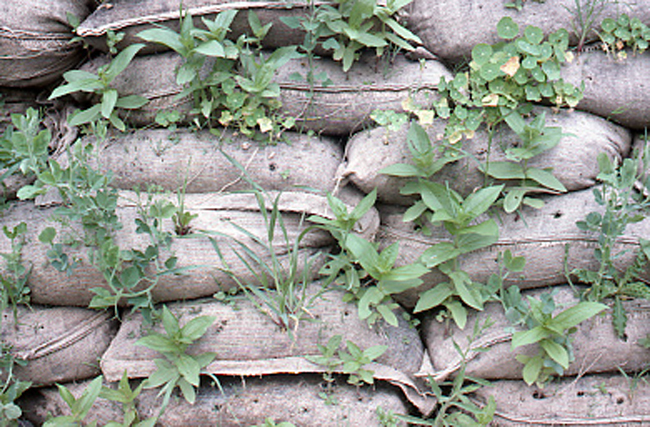Many of Simonds’ works explore the relationship between building and growing. The Growth House is the generative work in this exploration. Originally created as a drawing, it has since been constructed as an installation periodically (see 1974 Art Park, Lewiston, NY , 1994 Retrospective La Caixa, Barcelona, and 1994-1995 Retrospective, Jeude Paume, Paris). Simonds describes the Growth House as: “a seasonally renewable dwelling made of earthen bricks with seeds inside. As the seeds sprout, growth transforms the built structure; the dwelling is converted from shelter to food and is harvested and eaten” (1973).
Muchas de las obras de Simonds exploran la relación entre construcción y crecimiento. The Growth House es el trabajo generativo en esta exploración. Originalmente creada como un dibujo, se ha terminado construyendo como una instalación periódica(ver 1974 Art Park, Lewiston, NY, 1994 Retrospectiva La Caixa, Barcelona, y1994-1995 Retrospectiva, Jeu de Paume, París) Simonds describe The Growth House como: “Una vivienda renovable estacionalmente hecha de ladrillos de barro con semillas en su interior. A medida que las semillas germinan, el crecimiento transforma la estructura construida, la vivienda pasa de refugio a alimento, se cosecha y s ecome” (1973).

Simonds sees the Growth House as a “marriage of building and growing, shelter and food; a hermaphroditic dwelling. If one thinks of building (shelter) as a (“male”) imitation and envy of (“female”) growing (food) then one can see the Growth House as a hermaphroditic structure” 1973.
Simonds ve The Growth House como un “matrimonio de construcción y crecimiento, refugio y comida; una vivienda hermafrodita. Si uno piensa en la construcción (refugio) como una representación(“masculina”) y la semilla del crecimiento (“femenino”) como(comida) entonces uno puede ver la Casa del Crecimiento como una estructura hermafrodita “1973.






